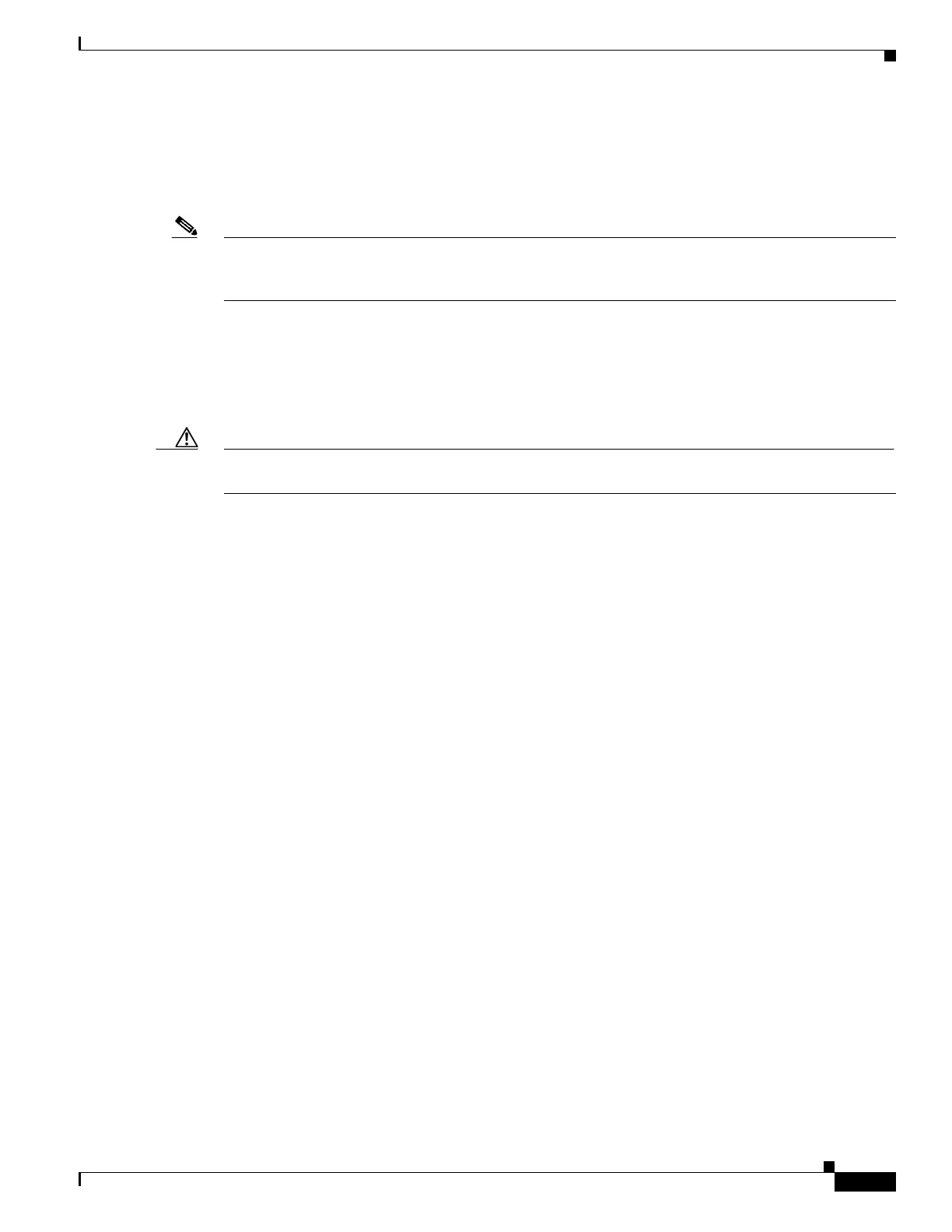1-11
Cisco ASA Series CLI Configuration Guide
Chapter 1 Configuring Inspection of Basic Internet Protocols
FTP Inspection
Using the strict Option
Using the strict option with the inspect ftp command increases the security of protected networks by
preventing web browsers from sending embedded commands in FTP requests.
Note To specify FTP commands that are not permitted to pass through the ASA, create an FTP map according
to the “Configuring an FTP Inspection Policy Map for Additional Inspection Control” section on
page 1-12.
After you enable the strict option on an interface, FTP inspection enforces the following behavior:
• An FTP command must be acknowledged before the ASA allows a new command.
• The ASA drops connections that send embedded commands.
• The 227 and PORT commands are checked to ensure they do not appear in an error string.
Caution Using the strict option may cause the failure of FTP clients that are not strictly compliant with FTP
RFCs.
If the strict option is enabled, each FTP command and response sequence is tracked for the following
anomalous activity:
• Truncated command—Number of commas in the PORT and PASV reply command is checked to see
if it is five. If it is not five, then the PORT command is assumed to be truncated and the TCP
connection is closed.
• Incorrect command—Checks the FTP command to see if it ends with <CR><LF> characters, as
required by the RFC. If it does not, the connection is closed.
• Size of RETR and STOR commands—These are checked against a fixed constant. If the size is
greater, then an error message is logged and the connection is closed.
• Command spoofing—The PORT command should always be sent from the client. The TCP
connection is denied if a PORT command is sent from the server.
• Reply spoofing—PASV reply command (227) should always be sent from the server. The TCP
connection is denied if a PASV reply command is sent from the client. This prevents the security
hole when the user executes “227 xxxxx a1, a2, a3, a4, p1, p2.”
• TCP stream editing—The ASA closes the connection if it detects TCP stream editing.
• Invalid port negotiation—The negotiated dynamic port value is checked to see if it is less than 1024.
As port numbers in the range from 1 to 1024 are reserved for well-known connections, if the
negotiated port falls in this range, then the TCP connection is freed.
• Command pipelining—The number of characters present after the port numbers in the PORT and
PASV reply command is cross checked with a constant value of 8. If it is more than 8, then the TCP
connection is closed.
• The ASA replaces the FTP server response to the SYST command with a series of Xs. to prevent the
server from revealing its system type to FTP clients. To override this default behavior, use the no
mask-syst-reply command in the FTP map.

